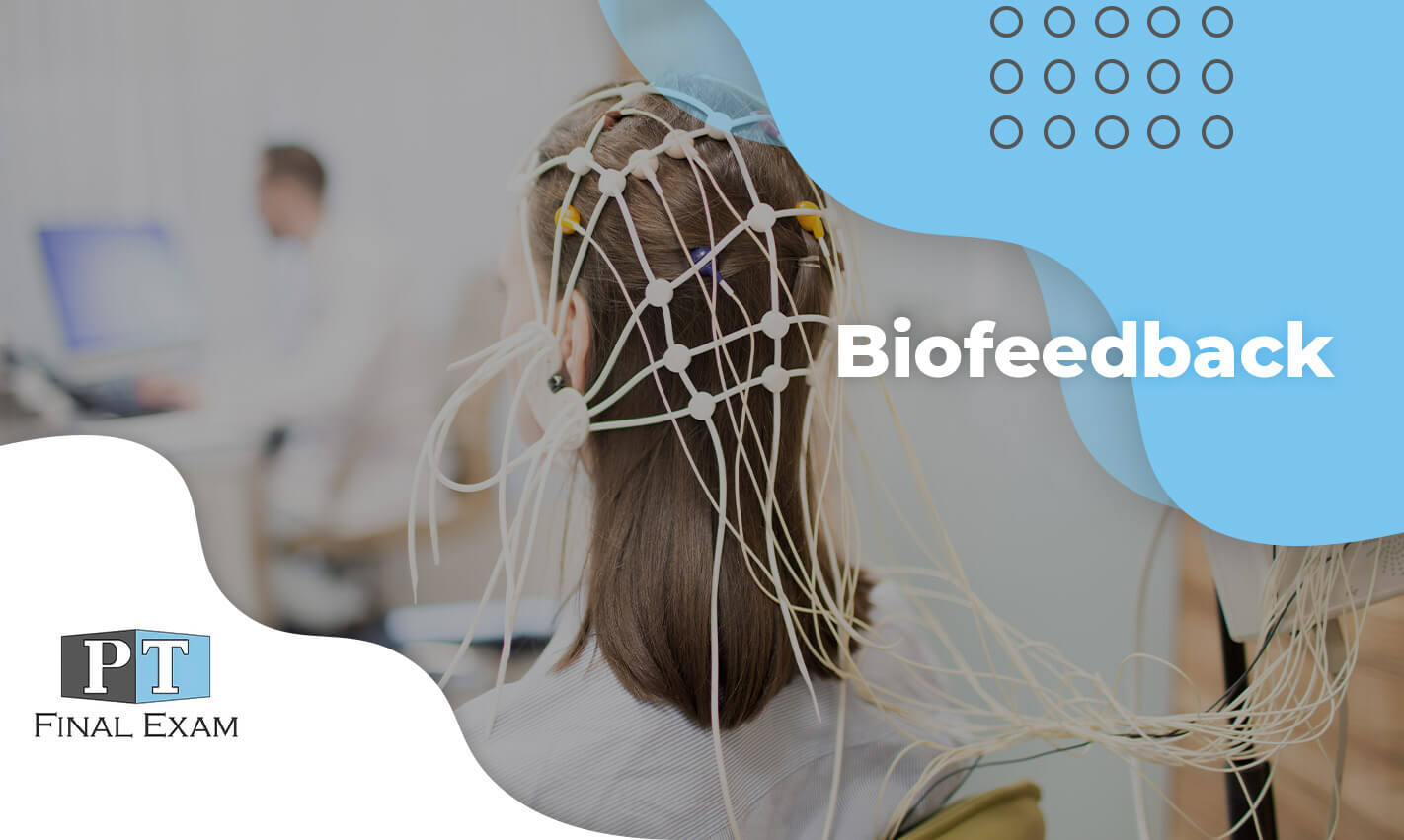 EMG biofeedback is a modality that is often used for 2 different purposes: 1) strengthening weak muscles and 2) relaxing tight muscles.
EMG biofeedback is a modality that is often used for 2 different purposes: 1) strengthening weak muscles and 2) relaxing tight muscles.
Biofeedback is not anything new and has been used in various ways for the past century. Biofeedback is not just limited to EMG mediated biofeedback. It can also include real time ultrasound, mirrors, camera-based therapy, inertial sensors, and electrogoniometry. In recent years, there has been an increase in biofeedback available from video games and virtual reality. One example of this is the Wii Balance Board. You stand on a pressure plate and attempt to move your center of pressure to meet the demands of the game.
Each of these provide audio or visual feedback to the individual, thus prompting them to either make a change or to reinforce a habit or skill. This can be especially useful for patients as it decreases boredom and increases skill.
EMG Biofeedback
The most common modality is EMG biofeedback. This involves placing electrodes on the skin that detect EMG activity. The feedback device then provides an audio or visual response to the EMG activity of the muscles under the electrodes.
EMG biofeedback can be very useful in strengthening weak muscles specifically. The classic example of this is quadriceps dysfunction following surgery. Using EMG biofeedback, a clinician can promote strength gains in the quads by encouraging the patient to isolate and contract the knee extensors. When the patient is successful, the biofeedback unit will provide a visual and audio response to the muscle contraction.
EMG biofeedback can also be used to inhibit muscle activity. This is best demonstrated in an overactive upper trapezius related to poor posture. The electrodes are placed over the muscle in question, and the patient can then detect the amount of EMG activity in the upper trapezius. As the person isolates and relaxes the upper trap, the biofeedback unit registers the decrease in muscle activity.
Most biofeedback machines use a clicking or beeping sound to represent EMG activity. Increased activity elicits increased beeping. The biofeedback machines also allow for modification to the sensitivity or “gain.” Thus you could increase the sensitivity of the machine to produce the beeping for a lesser contraction and vice versa.
Intervention
The real fun begins when you try to pinpoint a specific protocol for EMG biofeedback. Trust me, there are numerous protocols available among the various sources. The hilarious part is that the 2 big NPTE review books (Scorebuilders and TherapyEd) describe parameters that are exactly opposite to each other. Crazy, right?
The good news is that they are both right—depending on your point of view. Here are a few important points to remember:
Muscle Weakness
- For extremely weak muscles, usually involving some kind of peripheral nerve condition, the clinician’s goal will be for the patient to produce any muscle contraction. In other words, you’ll be happy to get anything out of the extremely weak muscle. Thus, you would set the machine to a HIGH sensitivity level.
- For moderately weak muscles, such as a quadriceps post-surgery, the clinician’s goal will be for a more intense muscle contraction. This is because there is no damage to the muscle or nerve, but simply a bit of pain inhibition in the quads. You would set the machine to a relatively LOW sensitivity level, require the patient to produce more of a contraction.
Muscle Tightness
- For extremely tight/stressed muscles, usually involving extreme pain and dysfunction, the clinician’s goal will be for the patient to reduce the muscle activity, even just a little. Thus, you would set the machine to have a HIGH sensitivity.
- For moderately tight/stressed muscles, usually in a chronic case of poor posture or gait, the clinician’s goal will be for the patient to reduce the muscle activity in a more dramatic way. Thus, you would set the machine to a relatively LOW sensitivity.
You need to also include electrode size and placement. Larger electrodes detect larger areas and are used for larger muscles. The opposite is true for smaller electrodes. When you space the electrodes farther apart, they detect more muscle activity. When they are closer, you detect less muscle activity.
Summary
As you can see, there is no “cookbook” for EMG biofeedback. There must be some clinical decision-making involved (as it should be in everything, right?). The key points to remember are:
- Weak muscles: Generally speaking, you’ll begin with high sensitivity, but this depends on the level of debility/dysfunction.
- Tight muscles: Generally speaking, you’ll begin with low sensitivity.
- These are relative sensitivity levels.
You’ll need to adapt the EMG biofeedback sensitivity levels to the level that is most appropriate for your patient. This will also be a moving target, requiring change between treatment sessions and even during treatment sessions.
If you understand the basic premise of EMG biofeedback, you’ll do fine on the NPTE! I’d love to hear your comments about how you’ve used biofeedback in the past. Just comment below!
DOWNLOAD: Biofeedback
References:
http://www.jneuroengrehab.com/content/pdf/1743-0003-10-60.pdf
http://www.ncbi.nlm.nih.gov/pmc/articles/PMC3037486/


7 thoughts on “Biofeedback”
Hey Will,
This is so easy to understand…I was confused before but not now… Thank you so much for clarification.
Great!is biofeedback indicated in pregnancy?
Finally! A simple explanation.. didn’t get a lot of this info in school and was pretty frustrated when I came across some practice questions about biofeedback. Thanks, Will!
this helped a lot, cleaned up the gray areas. Thanks Will
Great article! This cleared so much up. My mind was blown by how simple it was once you actually understand all the components. Thank you!!!
thank you will, this helps
Thanks for the clear cut explanation! I am in your MSG course and noticed the same contradictions in the two review books you mentioned above! This article was concise and to the point and helped tremendously!
Comments are closed.